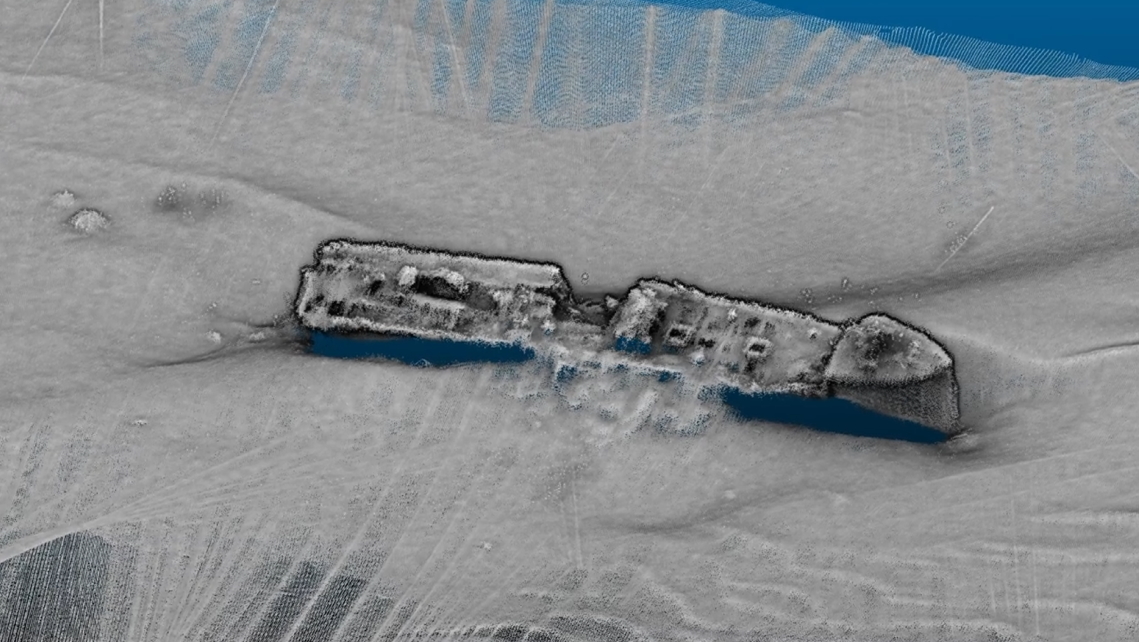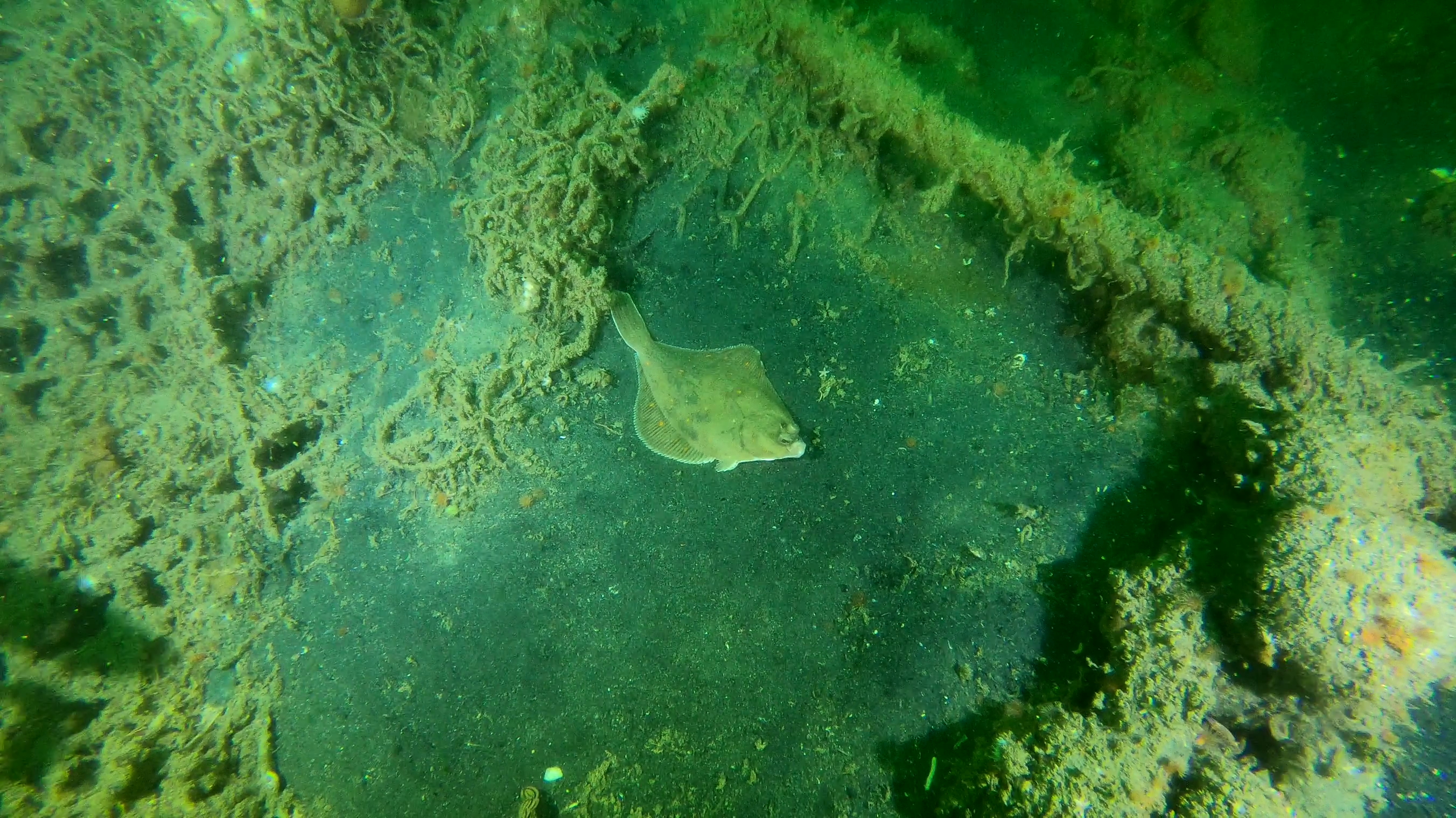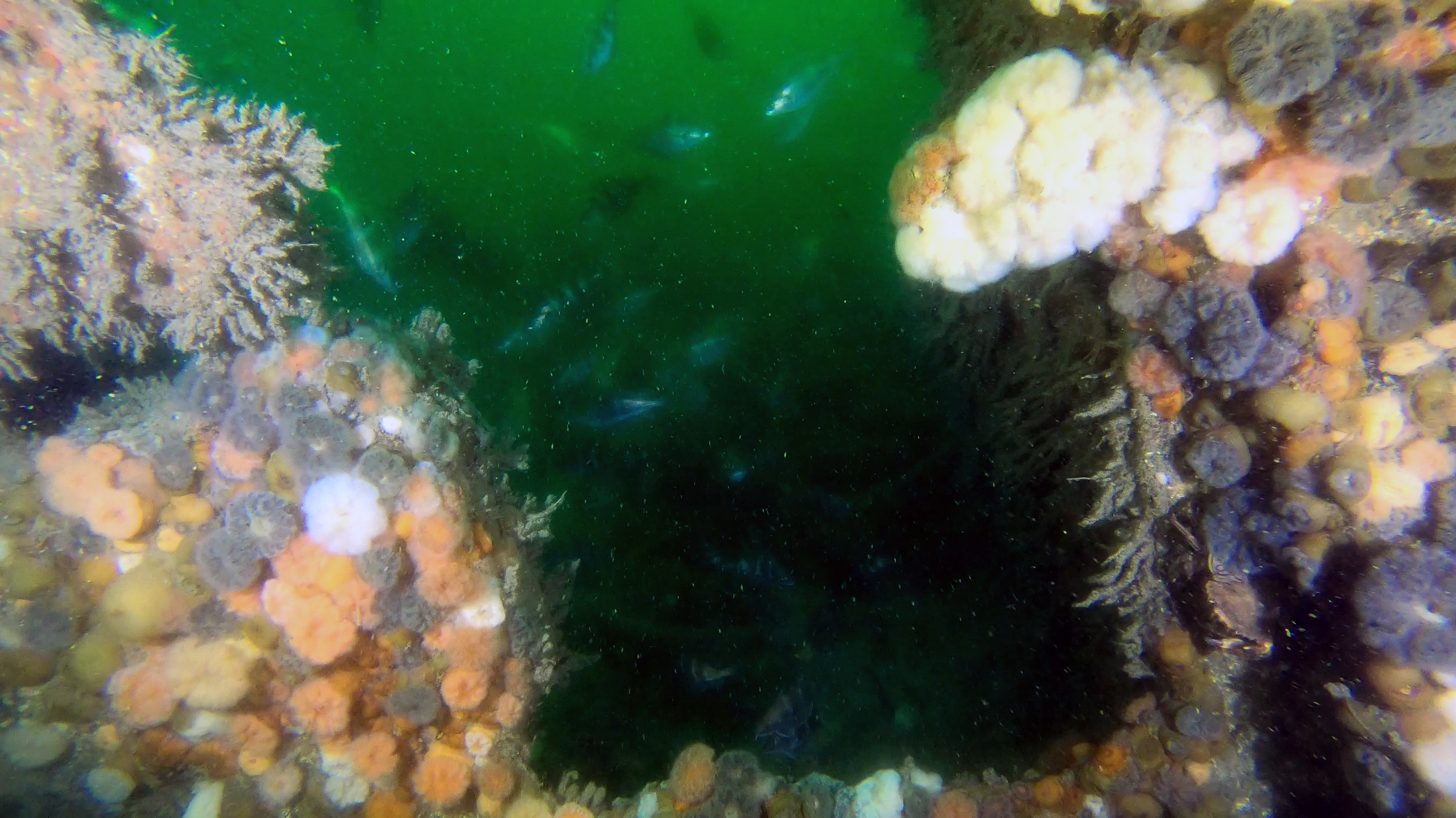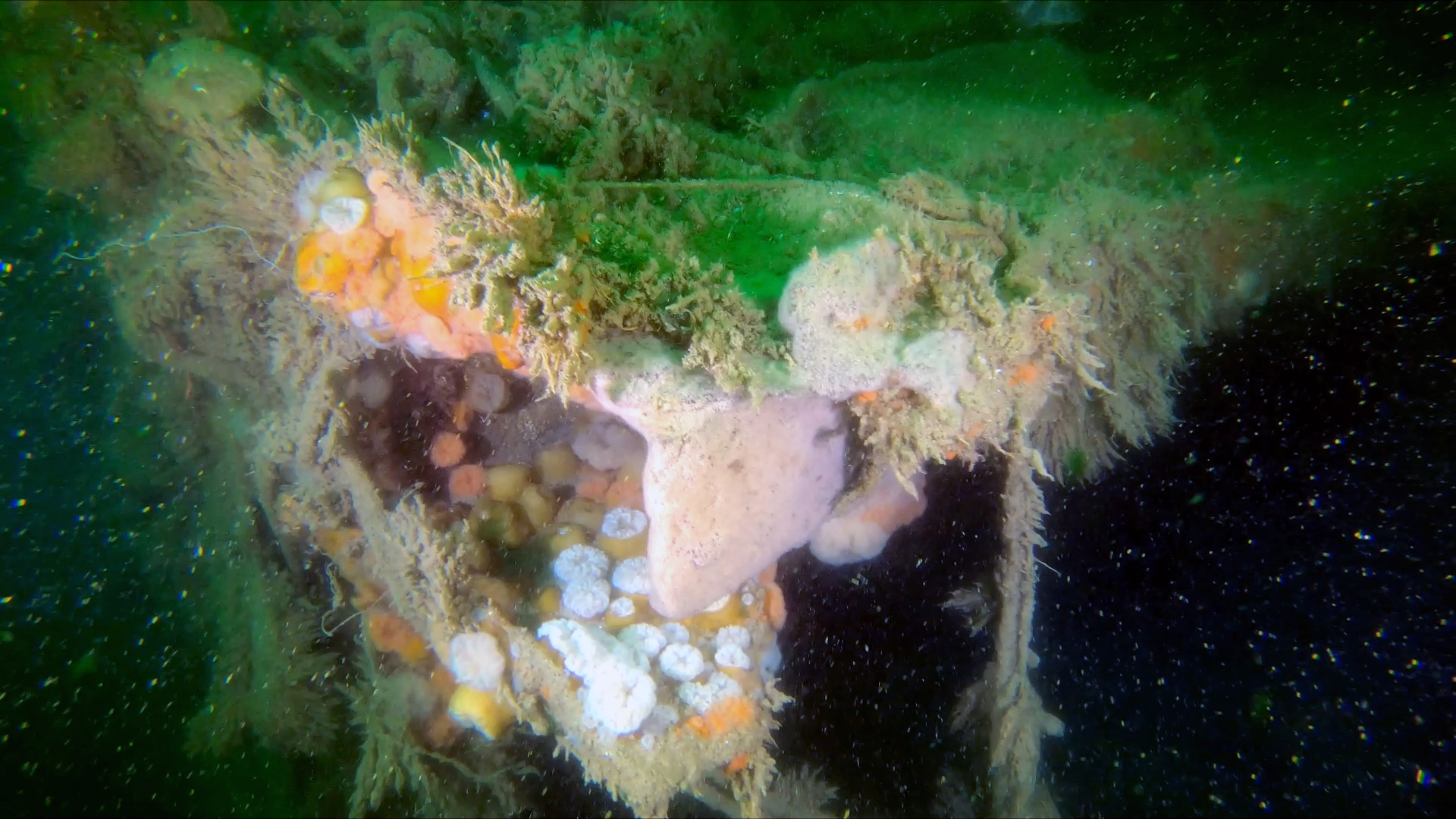Nazi shipwreck is leaking toxic chemicals into the sea, 80 years after sinking
A Nazi shipwreck that sank in the North Sea in 1942 is still polluting the seafloor around it, but there are signs of sea life adapting to the wreck.

The wreck of a Nazi patrol boat sunk by British warplanes in the North Sea in 1942 is still leaking hazardous chemicals 80 years later, according to new research.
A study published Oct. 18 in the journal Frontiers in Marine Science shows that pollutants from the historic shipwreck — including polycyclic aromatic hydrocarbons (PAHs) from its fuel, heavy metals, and traces of explosives — are affecting the microbiology and geochemistry of the seafloor around where it now rests; and the researchers suggest that the thousands of wartime wrecks in the North Sea, between Britain and the European continent, could similarly threaten the marine environment.
"The heavy metals can come from various sources — the metalwork inside the wreck itself can be a source of metal ions, as well as the fuel (coal), paint, and lubricants," project leader Maarten De Rijcke, a researcher at the Flanders Marine Institute in Belgium, told Live Science. "The PAHs and explosives are more clearly linked to the cargo of fossil fuels and munitions."
However, there are some signs that marine life is adapting to the wreck, with some bacteria possibly munching on the sunken ship's remains.
Related: World's deepest shipwreck found — a US navy warship sunk in biggest sea battle of WWII
De Rijcke said in an email that the wreck of the V-1302 John Mahn was chosen for the study because its position in the North Sea gives average hydrological conditions for the coast of Flanders; it is away from shipping lines, with good visibility and at an accessible depth; and it was known to contain munitions, which had been mentioned by recreational divers.
He and his colleagues wanted to learn if such wrecks were still affecting the microbial communities and surrounding sediments of the seafloor where they lie, thereby giving the researchers a unique insight into the environmental threats they pose, according to a statement.
Sign up for the Live Science daily newsletter now
Get the world’s most fascinating discoveries delivered straight to your inbox.
Historic wreck
The John Mahn was a German fishing trawler when it launched in 1927, but after World War II broke out in 1939 it was requisitioned by the German navy — called the "Kriegsmarine" under the Nazis — as a "vorpostenboot," or patrol boat, with the designation V-1302.
The Kriegsmarine based the vessel in the occupied Dutch port of Rotterdam, and in February 1942 it served in Operation Cerberus — a major naval action also known as the "Channel Dash" — as part of a convoy escorting the heavy cruiser Prinz Eugen and the battleships Scharnhorst and Gneisenau through the English Channel to ports in Germany.
But the V-1302 John Mahn was sunk by British bombers during the action, on Feb. 12, 1942; Twelve of its crew were killed, while 26 others were rescued by German ships nearby.



Although several other vessels were badly damaged during Operation Cerberus, V-1302 John Mahn was the only German ship sunk during the action. Its wreck now lies in the North Sea off the coast of Belgium, at a depth of about 115 feet (35 meters).
De Rijcke said the wreck is broadly typical of other World War II shipwrecks in the North Sea, although some are much larger and could pose a greater environmental threat.
"The munitions and fuel found on this wreck were in common use across all Kriegsmarine ships," he said. "A more heavily-armed destroyer or cruiser with the same munitions would be worth investigating, as our results show that the munition casings can be corroded through."
Leaking chemicals
The research team analyzed samples taken directly from the wreck's steel hull and the surrounding seafloor in July 2020, and kept frozen since then.
Their study showed that while many of the chemicals were hazardous, all were well below toxic levels after 80 years beneath the waves. "At these concentrations, they are all harmless," De Rijcke said.
The highest levels of metals like nickel and copper were found in the samples taken close to the ship's coal bunker — its supply of fuel — while the highest concentrations of PAHs were found in the samples taken closest to the vessel.
The analysis showed that the wreck had a relatively high level of biodiversity — fish, crabs and other crustaceans, molluscs, sea anemones, and marine plants, for example, use such wrecks as artificial reefs.
But it also showed that microorganisms on and around the wreck were adapting to the chemicals leaking from it and the metals of the vessel itself, and that some were even using them as food. "We see an increase of PAH-degrading bacteria near the coal bunker, indicating that some bacteria are benefitting from the availability of this chemical as a resource," De Rijcke said.
The study is part of a project to assess the environmental risks from sunken wrecks, which will allow governments to prioritize the most hazardous wrecks for closer inspection, he said.
Andrew Turner, an associate professor of marine and environmental biogeochemistry at the University of Plymouth in the United Kingdom who wasn't involved in the study, explained that all sunken vessels release contaminants into the seawater, but the severity of the problem depends on how large they are and the particular chemicals involved.
"Unfortunately, we do not know how widespread the problem of sunken boats is," he told Live Science.
And Doug Helton of the Emergency Response Division of the National Oceanic and Atmospheric Administration (NOAA), said that although it could be expensive to assess the risk from a shipwreck, it would be less costly than dealing with an uncontrolled oil or chemical spill.
But "many are grave sites and historic, so caution is always advised," he told Live Science in an email. "Some may be best left alone."
Tom Metcalfe is a freelance journalist and regular Live Science contributor who is based in London in the United Kingdom. Tom writes mainly about science, space, archaeology, the Earth and the oceans. He has also written for the BBC, NBC News, National Geographic, Scientific American, Air & Space, and many others.









